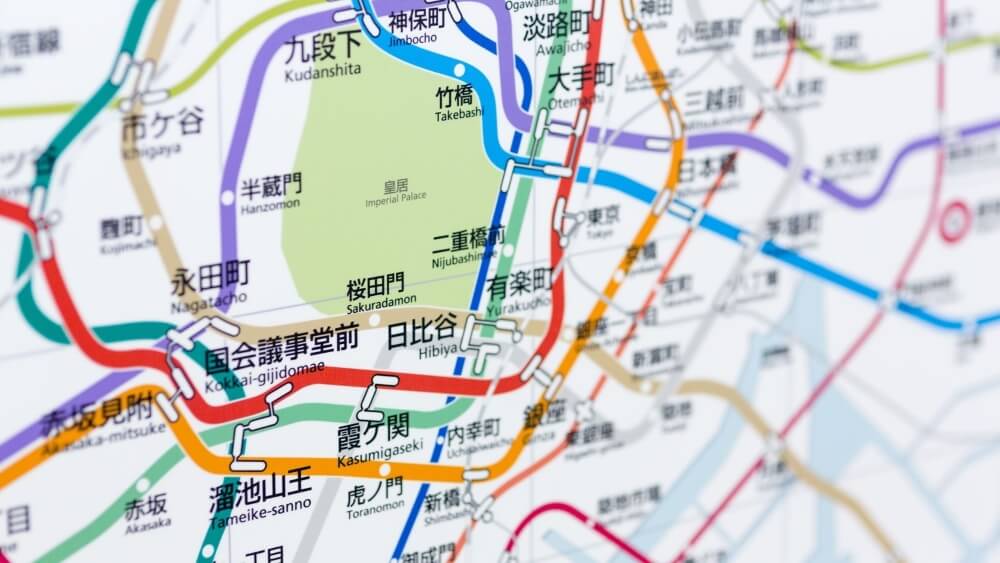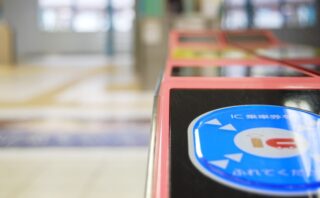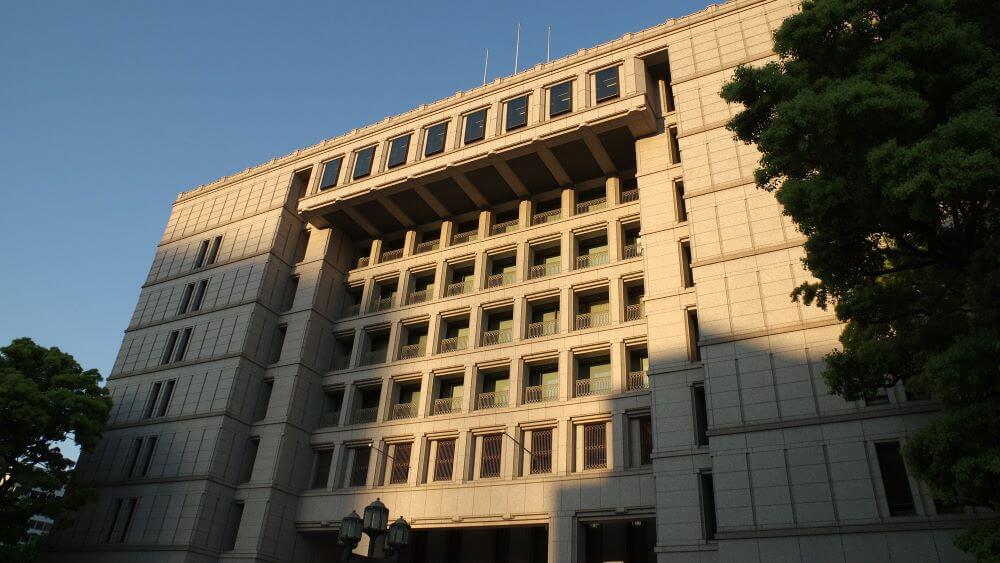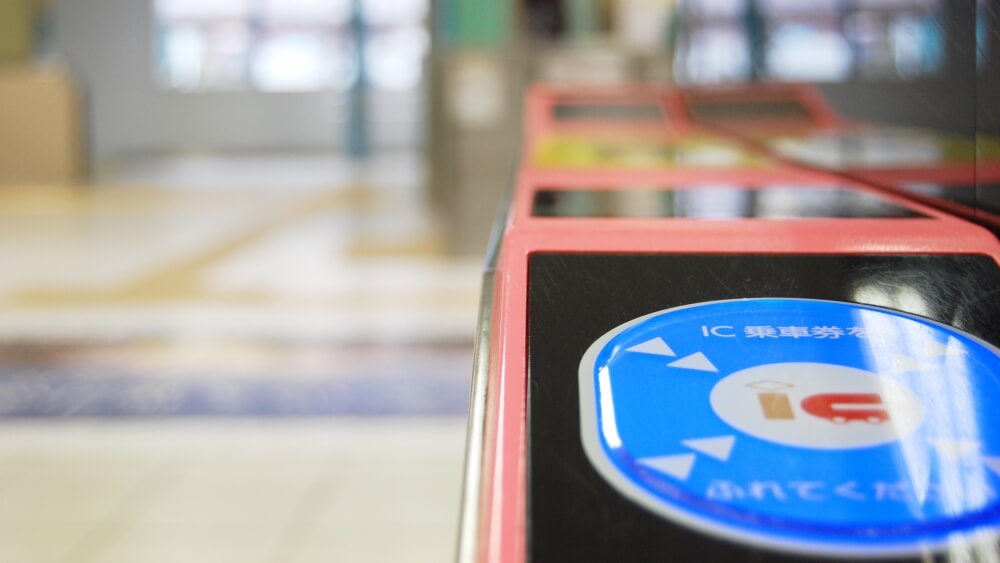Visitors to Tokyo, especially those new to the city, are often astounded by the complexity of the train system. Tokyo’s extensive train network poses challenges even for locals due to the multitude of lines, numerous operating companies, and stations with different names in the same area.
This article aims to help you understand and navigate Tokyo’s intricate train system, offering essential information to help you master its use.
Main Operators and Routes
To comprehend Tokyo’s train system, it’s essential to know what kind of operators there are. There are more than 10 railway companies operating 85 lines in Tokyo, but fear not – even locals don’t know them all. For better understanding, Tokyo trains can be divided into four main groups: subway, JR, Toei subway, and private railways.
Tokyo Metro
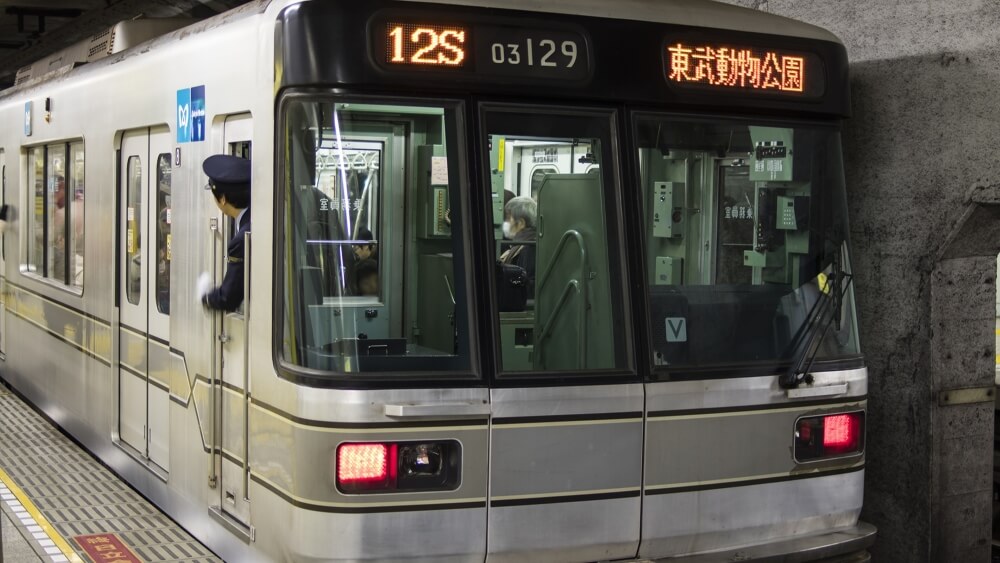
Tokyo Metro is an indispensable mode of transportation for moving within Tokyo. It covers almost every essential location for living, commuting or sightseeing in Tokyo. With easily distinguishable color-coded lines and comprehensive foreign language guidance, Tokyo Metro is user-friendly for international visitors. Here are the main Tokyo Metro lines and key stations:
- Ginza Line (Orange): Shibuya, Ginza, Nihonbashi, Ueno, Asakusa
- Marunouchi Line (Red): Shinjuku, Ginza, Tokyo, Ikebukuro
- Hibiya Line (Gray): Roppongi, Ginza, Tsukiji, Akihabara, Ueno
- Tozai Line (Sky Blue): Kagurazaka, Otemachi, Nihonbashi
- Chiyoda Line (Green): Meiji-jingu-mae (Harajuku), Hibiya, Kitasenju
- Yurakucho Line (Gold): Ikebukuro, Ginza-itchome, Toyosu
- Hanzomon Line (Purple): Shibuya, Otemachi, Oshiage (Skytree)
- Namboku Line (Emerald): Azabu-juban, Nagatacho
- Fukutoshin Line (Brown): Ikebukuro, Shinjuku-sanchome, Shibuya
Toei Subway
Operated by the Tokyo Metropolitan Government, Toei Subway has four lines. While not as frequently used as Tokyo Metro or JR, the Asakusa Line is convenient as some trains connect directly to Narita and Haneda airports. Note that you need to exit the gates when transferring between Toei Subway and other operators such as Tokyo Metro.
- Asakusa Line (Rose): Nihonbashi, Asakusa, Oshiage (Narita Airport, Haneda Airport)
- Mita Line (Blue): Meguro, Hibiya, Otemachi
- Shinjuku Line (Leaf): Shinjuku, Iwamotocho (Akihabara)
- Oedo Line (Magenta): Tochomae, Shinjuku, Roppongi, Tsukiji Market, Ryogoku
JR
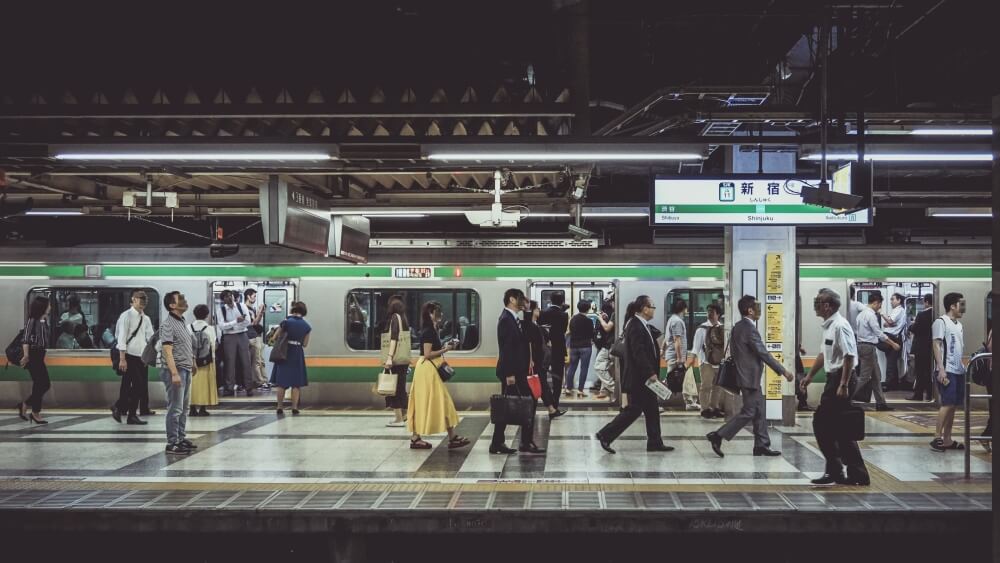
Japan Railways (JR) was initially designed for intercity train connections. However, in Tokyo, JR serves as a popular choice for both daily commuting and city tourism. Especially the Yamanote Line, which circles around the heart of the city, is frequently used by locals and tourists alike. JR operates predominantly on the surface. Key JR lines for local travel include:
- Yamanote Line (Light Green): Tokyo, Akihabara, Ueno, Ikebukuro, Shinjuku, Shibuya
- Chuo/Sobu Line (Yellow): Shinjuku, Akihabara, Ryogoku
- Keihin-Tohoku Line (Sky Blue): Yokohama, Tokyo, Akihabara, Ueno, Urawa
- Keiyo Line (Wine Red): Tokyo, Maihama (Tokyo Disneyland)
Private Railways
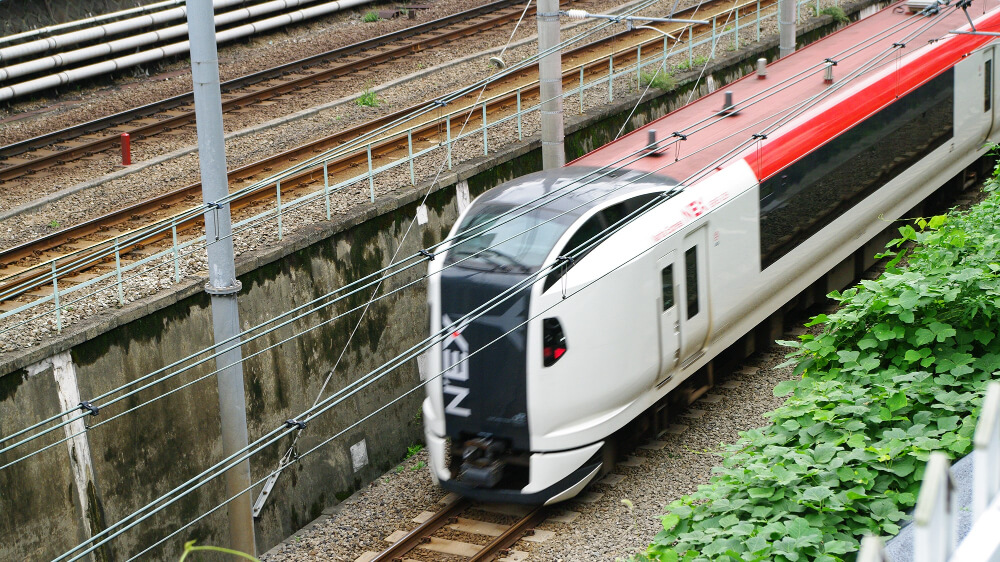
Apart from Metro and JR, Tokyo has numerous private railways, often useful for travel to suburbs or neighbours prefectures. Some notable lines include:
- Yurikamome: Unmanned trains operating mainly from Toyosu to Odaiba, providing scenic Tokyo views.
- Tobu Isesaki Line: Frequently used for travel from Asakusa to Nikko.
- Seibu Ikebukuro Line / Seibu Shinjuku Line: Used for traveling to Saitama from Ikebukuro or Shinjuku.
- Keikyu Line: Connects with Toei Asakusa Line, facilitating direct travel from Haneda Airport to Narita Airport via Keisei Line.
- Keio Line: Connects Shinjuku and Shibuya to Kanagawa.
- Odakyu Line: Connects Shinjuku to Kanagawa.
- Keisei Line: Connects with Toei Asakusa Line, allowing direct travel from Narita Airport to Haneda Airport via Keikyu Line.
IC Transportation Cards in Tokyo
If you are transferring between JR and the metro, you have to purchase a metro ticket, exit the subway station, and then purchase another ticket for JR to continue your journey. To simplify this, IC transportation cards like JR’s “Suica” and Metro’s “Pasmo” are convenient. These cards can be charged in advance and used for seamless travel, including buses. Both Suica and Pasmo is sold in Tokyo but can be used nationwide.
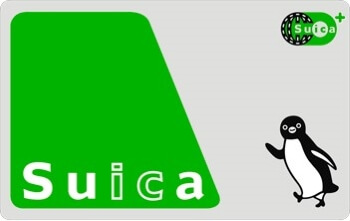
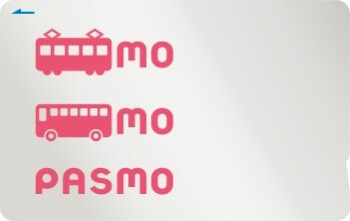
- Suica: https://www.jreast.co.jp/multi/pass/suica.html
- Pasmo: https://www.pasmo.co.jp/visitors/en/
Where to Buy
You can purchase Suica at JR stations, Pasmo at Metro stations’ ticket counters or vending machines. Vending machines support multiple languages, including English.
Fees
You can charge your card in increments of 1000 yen. Initial purchases include a ¥500 deposit (refundable upon return). For instance, if you charge ¥2000 initially, the usable amount is ¥1500. “Pasmo Passport” and “Welcome Suica” do not require a deposit.
Usage
Simply touch the card to pass through a gate. The remaining balance is displayed on the gate screen. In case of insufficient funds at the exit station, use the nearby machine to pay the remaining amount and touch your card on the gate again.
Advanced Use
These cards can be used at nationwide convenience stores, IC card-compatible lockers, vending machines and even some restaurants.
Notes
- Lost cards cannot be reissued.
- Cannot be used across different regions. (e.g. from Tokyo to Nagoya.)
Tips for Using Trains in Tokyo
Multiple stations in a same area
Some hub areas have multiple stations with different names in close proximity, connected underground or within a 2-3 minute walk. Examples include:
- Shinjuku / Shinjuku Nishiguchi / Shinjuku Sanchome
- Tokyo / Otemachi
- Harajuku / Meiji-jingumae
- Akihabara / Iwamotocho
- Ueno Hirokoji / Naka-Okachimachi / Okachimachi
Same Station Name in distant
Conversely, there are stations with the same name but considerably apart. When using stations like the ones listed below, it’s advisable to research in advance which route is closer to your destination.
- Asakusa (Toei Asakusa Line/Tokyo Metro Ginza Line/Tsukuba Express/Tobu Line)
- Ryogoku (JR Sobu Line/Toei Oedo Line).
Transfer between different companies
The fare and travel time may vary significantly depending on whether you travel using only the Metro or JR, compared to combining different operating companies. For example, when traveling from Asakusa Station to Shinjuku Station, the options are as follows:
- Asakusa – (Metro) – Akasakamitsuke – (Metro) – Shinjuku: 1 transfer, 37 minutes, 260 yen
- Asakusa – (Metro) – Kanda – (JR) – Shinjuku: 1 transfer, 28 minutes, 360 yen
While Google Maps provides route information, it may not always display fares. For more detailed route searches, it is recommended to use the Japan Transit Planner (https://world.jorudan.co.jp/mln/en/).
Types of Trains
Many rail lines have various types of trains with different routes or stopping stations. The terminology and definitions also vary by operating company, so it’s necessary to check on-site to know which type of train stops at which station. Here are definitions for commonly used terms:
- Limited Express (Tokkyu): Stops only at major stations, allowing for fast long-distance travel. Often requires a separate Limited Express ticket in addition to the regular fare.
- Express (Kyuko): Stops at a limited number of stations, enabling relatively fast travel. Depending on the operating company, an express surcharge may be required in addition to the regular fare.
- Rapid (Kaisoku) / Commuter Rapid (Tsuukin kaisoku): Skips some stations, often seen during rush hours and stops only at stations where many companies are located.
- Local (Kakueki or Futsuu): Stops at every station along the line.
Train Status Information
Trains may experience delays or suspensions due to accidents or natural disasters. Such irregular updates are often provided only in Japanese at the station, but you can check the operational status in English on following pages.
- JR East: https://traininfo.jreast.co.jp/train_info/e/kanto.aspx
- Tokyo Metro: https://www.tokyometro.jp/lang_en/index.html
- Toei Subway: https://www.kotsu.metro.tokyo.jp/eng/operation_status/
Rush Hours
Tokyo’s rush hour is intense, with staff known as “pushers” helping passengers board crowded trains. Incidents like harassment or theft are more likely during rush hour. Avoid if possible, especially between 7:30 and 9:00 AM. Busiest routes include Metro Tozai Line, JR Sobu Line, JR Chuo Line, and JR Keihin-Tohoku Line.
